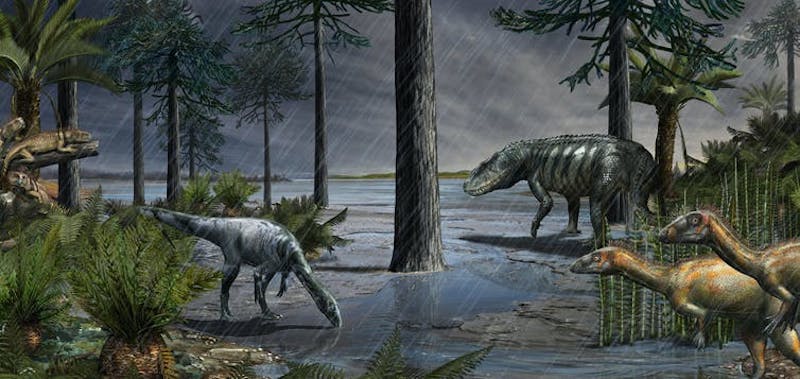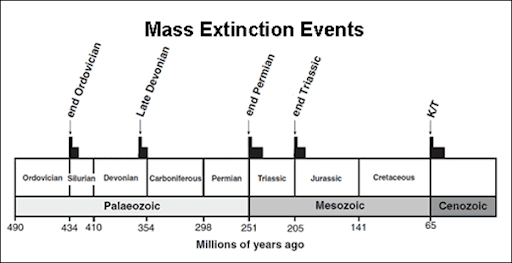
It’s pretty much accepted that a mass extinction 66 million years ago, at the end of the Cretaceous period, led to the end of the age of the dinosaurs. This catastrophic event has been blamed on an asteroid impact, although volcanic eruptions and gradual climate change may also have been factors. Of course, this was a fortuitous development if you were a mammal. But have you ever wondered what set the stage for the rise of the dinosaurs?
Scientists generally agree there have been five mass extinctions in geological history (not counting the current, human-caused loss of species). But now some are promoting the discovery of a previously unknown mass extinction — the Carnian Pluvial Episode (CPE). The culprit this time appears to have been gigantic volcanic eruptions on what is now the west coast of Canada which led to massive global warming and increases in rainfall.
The dinosaurs had shown up about 15 million years earlier and, apparently as a result of the CPE, expanded rapidly in the next 10 million to 15 million years, becoming the dominant land species. But they weren’t the only ones to have benefitted. Tetrapod (four-limbed) groups like turtles, lizards, crocodiles and mammals also came on the scene.
Can this period teach us anything of value today? Probably, since we’re beginning another warming event. So there’s a lot more scientific work to be done to better understand this era.
But for the layman, it’s interesting that a mass-extinction event is what may have given rise to the age of dinosaurs in the first place.
For more information, see “Did this mass extinction event trigger dawn of the dinosaurs?” (https://earthsky.org/earth/mass-extinction-event-trigger-dawn-of-dinosaurs?).

